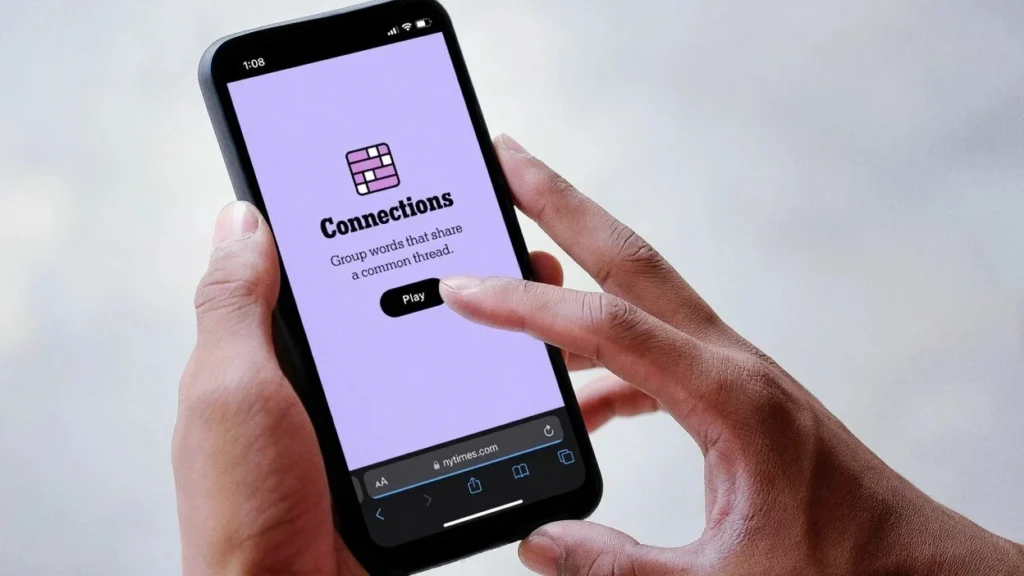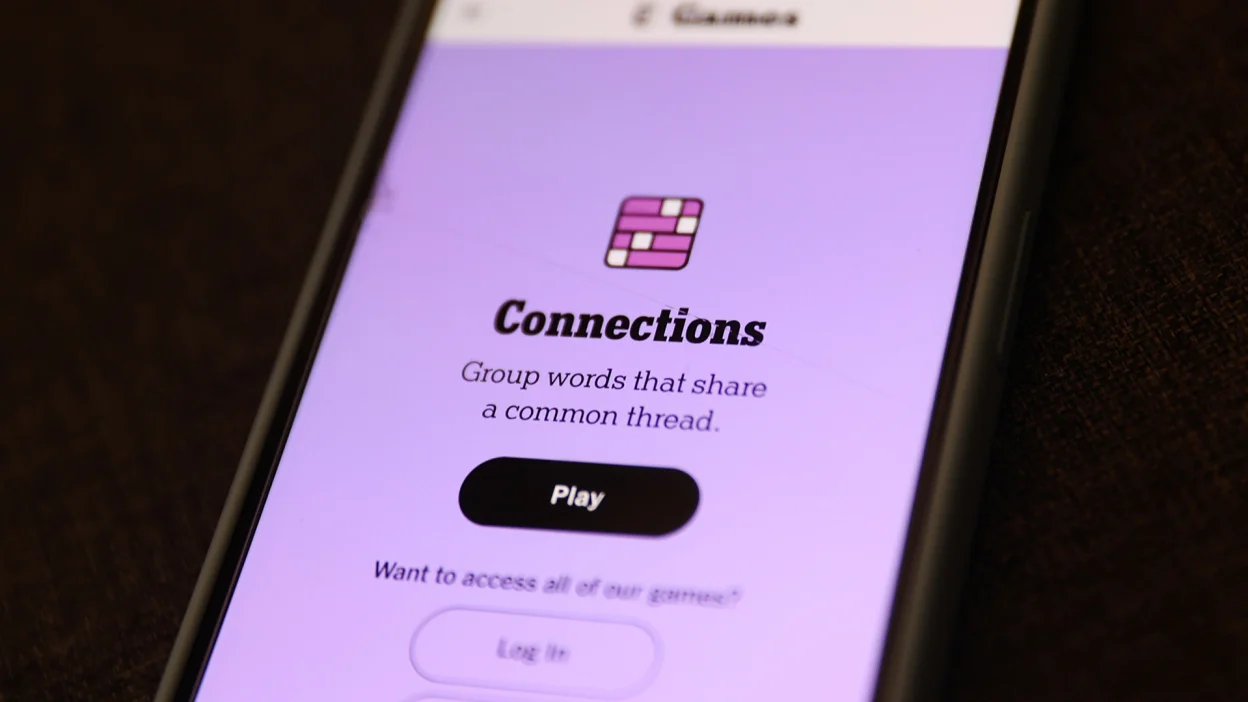If you’re a fan of word puzzles, you may have encountered NYT Connections, one of the New York Times’ popular daily games. As the game’s difficulty has grown, many players seek help—subtle guidance that doesn’t spoil the fun. That’s where Mashable’s Connection Hints (often searched as “Connections Hint Mashable”) come into play.
But what exactly are these hints? How are they structured? Are they helpful or do they risk spoiling the puzzle? In this article, we’ll explore everything you need to know about Connections Hint Mashable—from basics to advanced strategies.
What Is NYT Connections?

To understand what Mashable’s hints do, first you need a clear picture of the game itself.
- Each day, players are shown 16 seemingly unrelated words.
- The goal is to group them into four categories of four words each, based on shared themes or connections.
- The categories vary in difficulty. The puzzle uses a color-coded tier system: Yellow (easiest), Green, Blue, Purple (hardest).
- You are allowed a limited number of wrong groupings (“mistakes”) before the game ends.
- Some groups are direct and obvious, others require lateral thinking, wordplay, homonyms, or more abstract connections.
Because of the variety and subtlety in connections, many players occasionally get stuck. That’s where hints can help.
What Are “Connections Hint Mashable”?
Connections Hint Mashable refers to the daily hints and clue-articles that Mashable (an online media platform) publishes to assist players of NYT Connections. These hints aim to provide guidance without fully revealing the answers. They help nudge your thinking toward possible themes, encourage pattern recognition, and reduce guesswork—while still preserving the challenge and satisfaction of solving the puzzle.
Mashable’s approach is considered among the more user-friendly hint systems. Their hints are structured carefully to avoid outright spoilers, letting players use them selectively based on how stuck they are.
Why Many Players Use Mashable’s Hints
Here are some reasons why the mashable connection hints are popular among puzzle enthusiasts:
- Balanced assistance
The hints are not so vague as to be useless, nor so explicit that they ruin the puzzle. They strike a balance. - Non-spoiler first, then optional reveal
Hints are layered: early hints are gentle, later ones may point more clearly to connections, and full answers (if provided) are typically placed at the bottom so you can choose whether to scroll that far. - Daily consistency
Mashable regularly posts hints daily, aligned with the NYT Connections schedule. Players know where to look each day. - Accessible language
The hints are written in a way that even newcomers can understand, yet with enough nuance to help seasoned players. - Community credibility
Over time, Mashable has built trust among puzzle players. Because of their reputation in digital media, people often prefer their hints over random forum spoilers.
How Mashable Organizes Its Hints

Mashable uses a tiered or layered hint structure, giving you degrees of help depending on how much you want:
| Tier of Hint | Clarity Level | Purpose / Use |
|---|---|---|
| Tier 1 | Vague / General Clue | Broad thematic nudge, just enough to get you thinking in a direction without giving away the set |
| Tier 2 | More Specific | Narrows down possibilities, gives a stronger sense of the theme without naming it outright |
| Tier 3 (optional) | Clear Clue or Partial Reveal | Helps confirm your grouping or point out one of the more difficult sets |
| Full Answer (if included) | Complete Reveal | For players who are truly stuck or want to check their solution |
You typically can see the first few hints without being spoiled. If needed, you scroll further for stronger hints or answers.
Using Mashable’s Hints Effectively
Using hints well is an art. Too much help, and the puzzle loses fun; too little, and you’re frustrated. Here’s how to use Mashable’s hints optimally:
Step 1: Attempt the Puzzle First
Before turning to hints, try to spot obvious groups on your own. Many puzzles have at least one or two fairly visible connections (the Yellow category). Work on those first.
Step 2: Read Tier 1 Hints
Once you’ve tried some groupings, read the first-level hints. These might say something like “They relate to movement” or “Think of musical instruments.” Don’t fixate—just see if any groups click.
Step 3: Match Words to the Hint
Scan the 16 words to find which ones plausibly fit the hint. Sometimes one word distinctly fits a theme, helping you anchor that group. Use that anchor to test grouping.
Step 4: Use Tier 2 / Tier 3 if Needed
If you’re still stuck, move to the next hint level. The more specific clues can confirm your guess or eliminate wrong sets.
Step 5: Leave Full Answers for Last
If Mashable provides full solutions, leave them as a last resort. Use them only after exhausting your attempts or to confirm what you’ve done. That way, you preserve the puzzle-solving experience.
Step 6: Analyze What You Missed
After solving (or viewing the answer), revisit what caused confusion. Learn how hints led to correct sets. Over time this trains your pattern recognition and intuition.
Types of Hints & Example Styles
Here are the kinds of hints Mashable tends to use, with example styles (fictional):
- Thematic hint — “Think of things you use in the kitchen” → points toward cooking utensils or tools.
- Synonym/wordplay hint — “Alternate names or slang for these items” → nudges you toward looking for alternate meanings.
- Category hint — “This set is about movement, not objects” → implies verbs or actions.
- Contrast hint — “Unlike the others, these are abstract ideas” → pushes you to separate tangible vs abstract words.
- Meta hint — “One group is the hardest; start with the easiest group first” → helps with strategy.
The hints are framed to give direction without being too direct.
Strategies Enhanced by Mashable Hints
Here are advanced solving strategies that work well when combined with Mashable’s hints:
1. Spot the Easiest Category First
Most puzzles have one relatively obvious set. Solve that first; it reduces the word pool and makes the rest easier.
2. Process of Elimination
Use hints to eliminate words from consideration for a category. If a word doesn’t match hint themes, exclude it from that set.
3. Cross-Referencing Hints
Compare hints across categories. Sometimes one hint hints at what a category is not, helping you avoid misgrouping.
4. Flexibility with Word Meanings
Be open to alternate definitions, slang, idioms, or homonyms. Hints often push you to think beyond the obvious.
5. Pattern Recognition Over Time
Over multiple puzzles, you’ll start seeing recurring types of themes. Mashable hints help accelerate that learning by highlighting patterns.
6. Time Management
Don’t dwell on one set too long. If hints don’t help at one level, move on and return later with fresh eyes.
Comparisons: Mashable vs Other Hint Sources
To understand the strengths and limitations of Mashable’s hints, it helps to compare with other hint sources.
| Feature | Mashable Hints | Reddit / Forums | YouTube / Video Walkthroughs |
|---|---|---|---|
| Spoiler Control | Good — layered hints, answers optional | Variable — spoilers often posted | Usually full reveal or step-by-step |
| Clarity & Tone | Professional, readable, balanced | Mixed (depends on user) | Visual, explicit explanations |
| Speed / Timeliness | Daily aligned with NYT | Fast crowd sourcing | After the fact (videos take time) |
| Engagement | Comments & discussion below hints | Active community exchange | Tutorial + commentary format |
| Learning Benefit | Hints + optional answer reinforce pattern skills | Some insight but less structured | Good for breakdown, less “guess yourself” practice |
Mashable tends to hit a sweet spot: enough guidance without fully giving away the puzzle, with consistent updates and a controlled structure.
Pitfalls & Common Mistakes When Using Mashable Hints
Even good hints can be misused. Beware of these common errors:
- Rushing to full answers
Jumping straight to full solutions defeats the purpose and robs you of learning. - Over-relying on early hints
Trying to fit every word into an early hint might force incorrect grouping. - Ignoring alternate meanings
Hints sometimes push you to think abstractly, so avoid sticking to the most obvious definitions. - Becoming lazy
If you use hints for everything, your own puzzle muscle doesn’t grow. - Misinterpreting tone
Not all hints are literal. Sometimes Mashable uses figurative language or analogy—don’t take hints too rigidly. - Not revisiting mistakes
Failing to reflect on wrong guesses prevents growth. Always analyze where you went wrong.
Sample Walkthrough (Hypothetical Example)

Let’s simulate a simplified puzzle to show how one might use Mashable hints:
You have 16 words like: “Violin, Banana, Whale, Drum, Apple, Piano, Mango, Dolphin, Saxophone, Grape, Cello, Orca, Lime, Flute, Trout, Berry.”
Mashable’s hints might be:
- Tier 1: “Think of music, food, animals…”
- Tier 2: “One category is musical instruments, one is tropical fruits, one is marine life, one is berries (small fruits).”
- Tier 3: “Instruments: Violin, Drum, Piano, Saxophone. Marine life: Whale, Dolphin, Orca, Trout.”
You would:
- Identify the musical instruments group first (clear).
- Use the Tier 2 and 3 hints to separate marine life vs fruit vs berries.
- Check ambiguous words (e.g. “Berry” vs “Grape”) carefully.
- Confirm groups and avoid mistakes.
This kind of step-wise use of hints preserves challenge but makes it navigable.
Benefits & Side Effects of Using Mashable Hints
Benefits
- Reduces frustration
When you’re stuck, hints can push you forward. - Speeds up solving
Better guesses, fewer wasted attempts. - Learning curve acceleration
You internalize pattern recognition faster. - Confidence boost
Hints help avoid second-guessing and increase certainty.
Side Effects / Risks
- Overdependence
Relying too much on hints weakens your independent solving skill. - Spoiler temptation
It’s easy to scroll too far and see full answers prematurely. - False confidence
You might believe in a wrong set just because it fits a hint superficially. - Less satisfaction
Solutions given too openly reduce your “aha!” moment.
How to Improve Your Puzzle Skill (Beyond Hints)
To get the most from Mashable hints and ultimately reduce your need for them, cultivate these habits:
- Play regularly
The more you practice, the sharper your word intuition. - Keep a “pattern journal”
Note the kinds of categories and connections that appear frequently (e.g. colors, homonyms, prefixes). - Learn lateral thinking
Practice puzzles that require synonym thinking, analogies, wordplay, or metaphor. - Study past puzzles
Review previous NYT Connections grids and their themes. - Test yourself before reading hints
Force yourself to attempt first—hints should be safety rails, not crutches. - Engage with puzzle communities
Reading others’ reasoning exposes you to diverse approaches.
Read: Branding Your Business with Custom Sticky Notes
Read: How do you set up SPF, DKIM, and DMARC records for better email security via cPanel?
Read: Faurtat: Delivering Reliable Lifting and Storage Solutions for Industrial Efficiency
Read: Why Local Deck Builders Understand Your Climate Needs Best
Read: Investing in DTF Printers in Malaysia
FAQs
What exactly is a “Connections Hint Mashable”?
It’s Mashable’s daily puzzle hint feature for NYT Connections, giving tiered clues to guide without spoiling answers.
Are Mashable hints official from NYT?
No—they are independent. But Mashable aligns its timing and puzzle content with the NYT release.
Will using hints reduce challenge?
If overused, yes. But used selectively, hints maintain the puzzle’s balance of challenge and enjoyment.
Do Mashable hints include full solutions?
Sometimes yes; they usually hide full answers at the bottom so that readers choose whether to see them.
Can beginners benefit from Mashable hints?
Absolutely. The hints are beginner-friendly yet still useful for experienced players.
Conclusion
Connections Hint Mashable has become an important tool for NYT Connections players who want just the right amount of help. It offers a structured, layered way to guide your thinking, nudge you toward connections, and reduce guesswork—while still preserving the satisfaction that comes from solving puzzles using your own insight.
